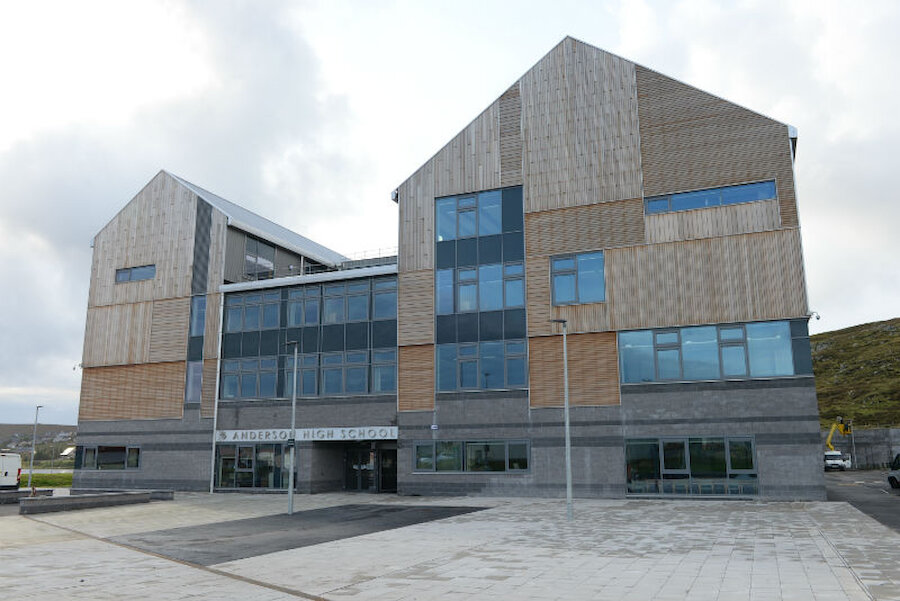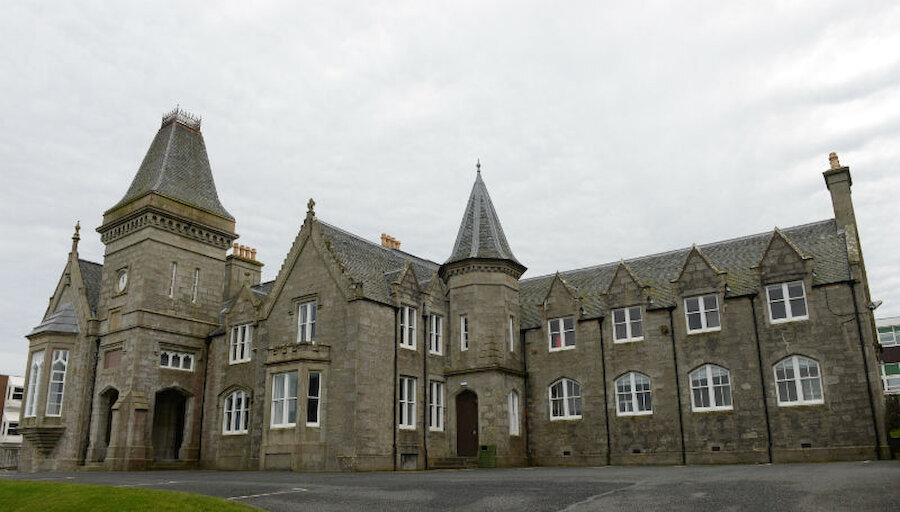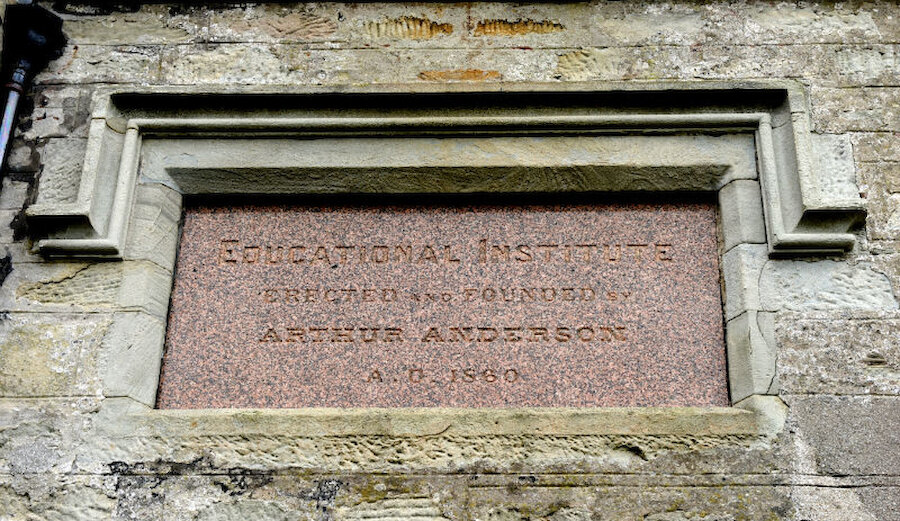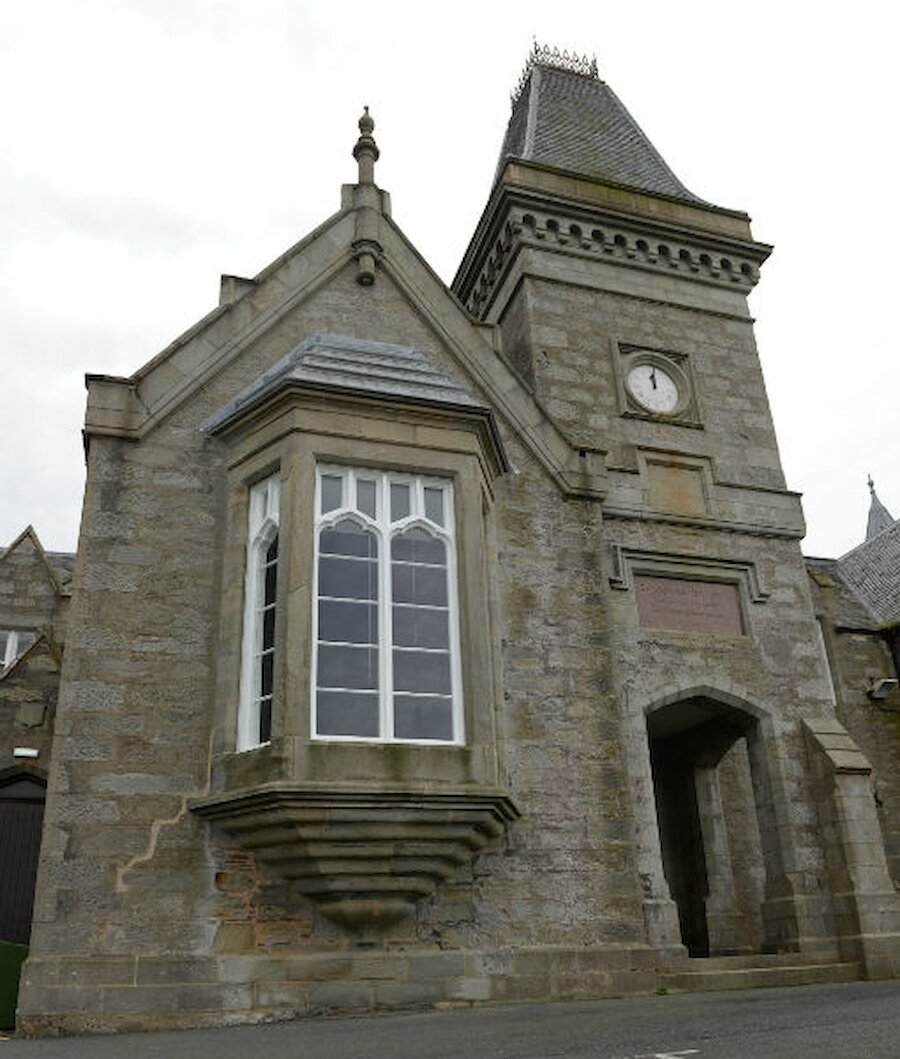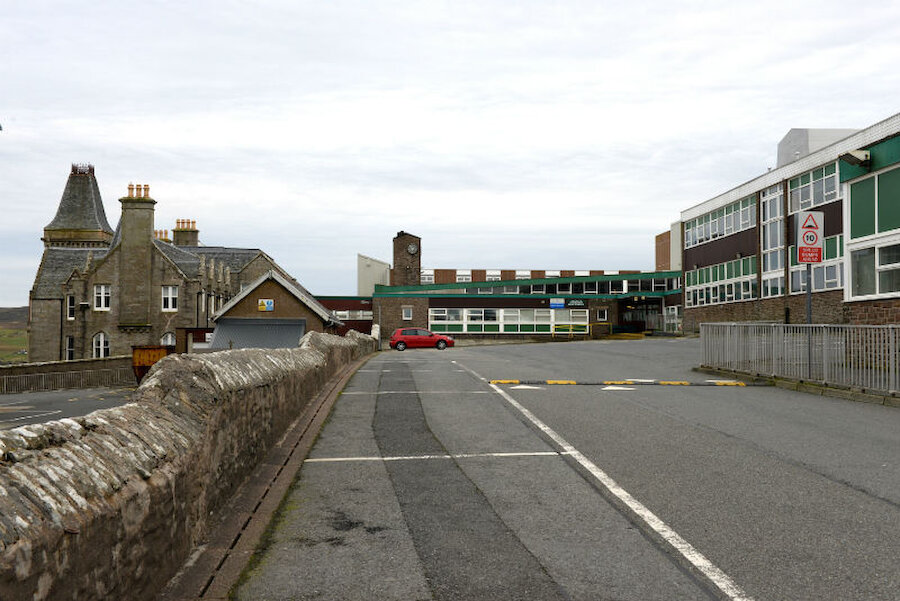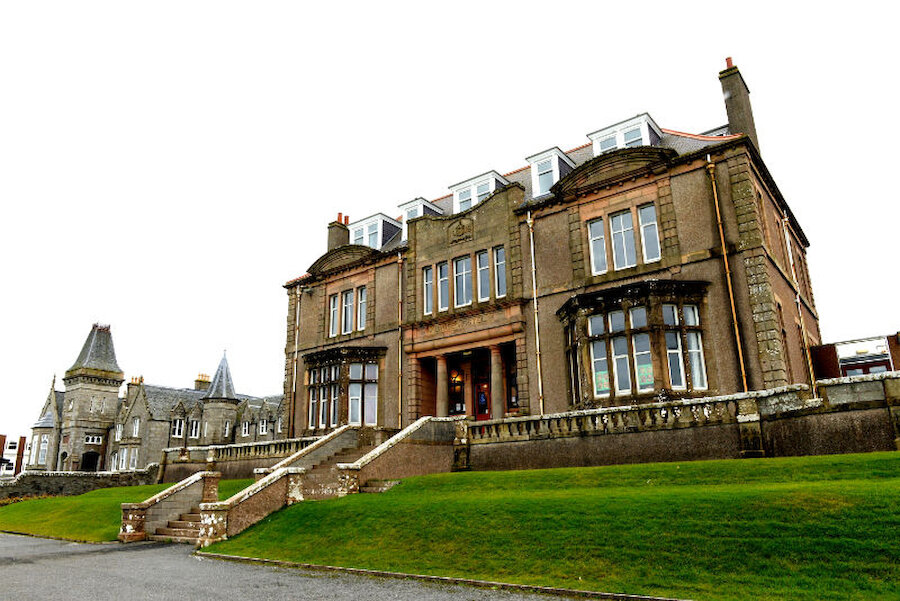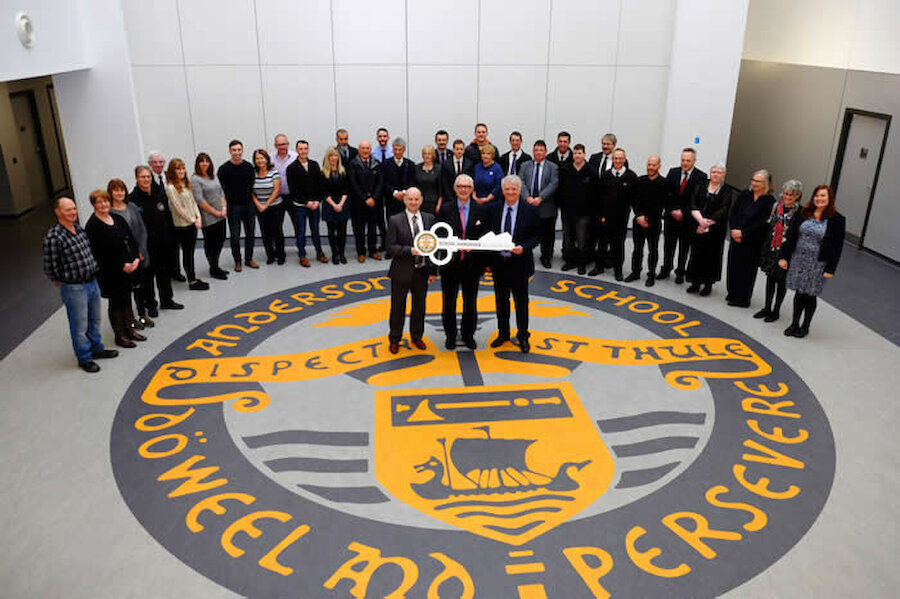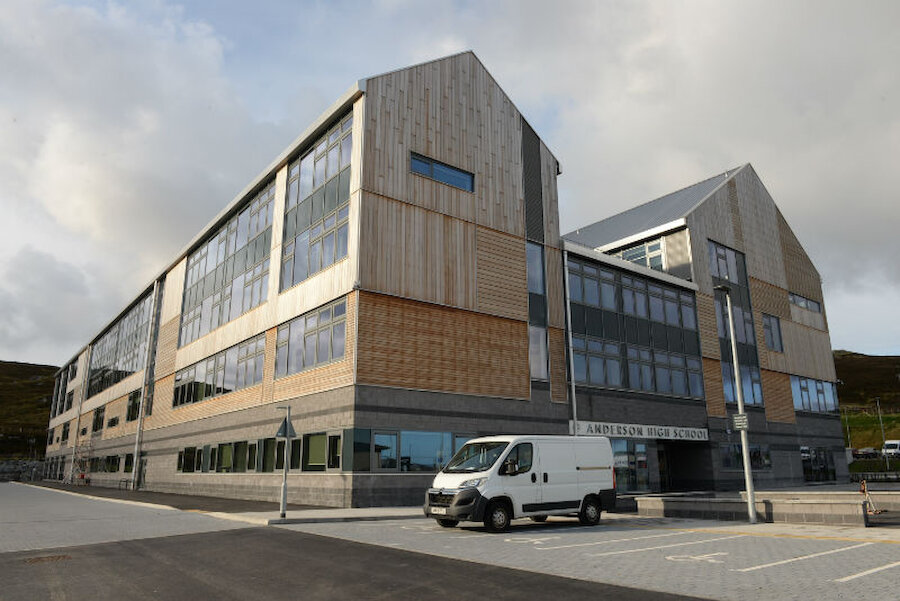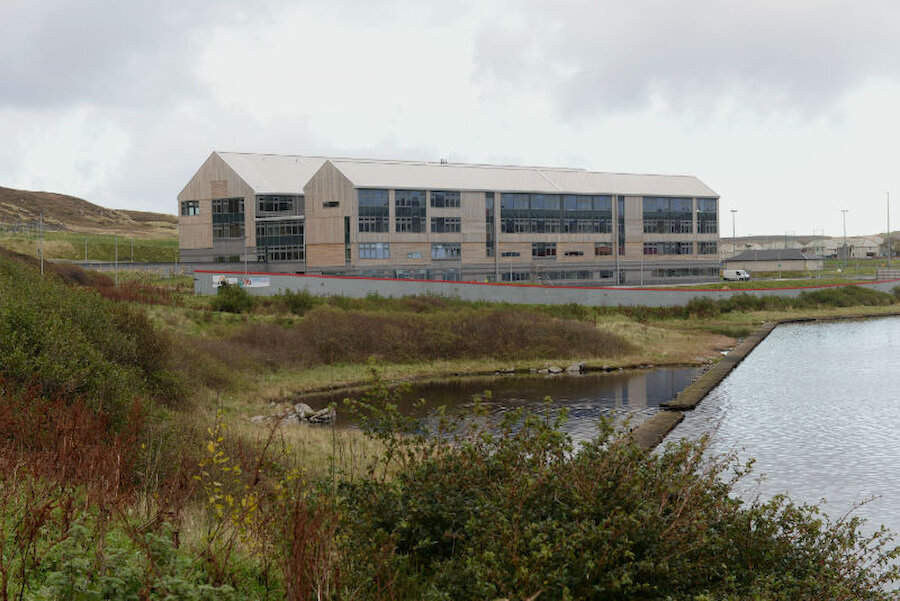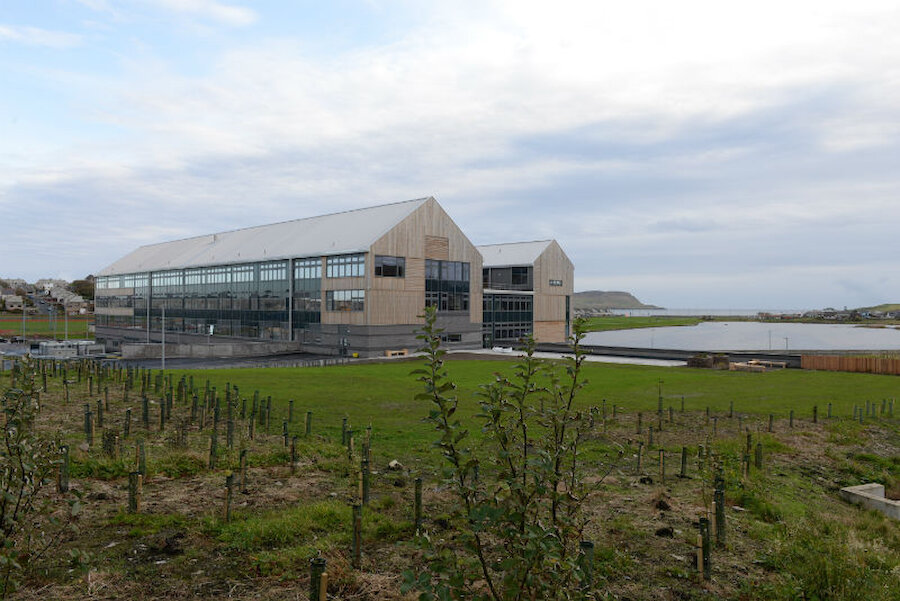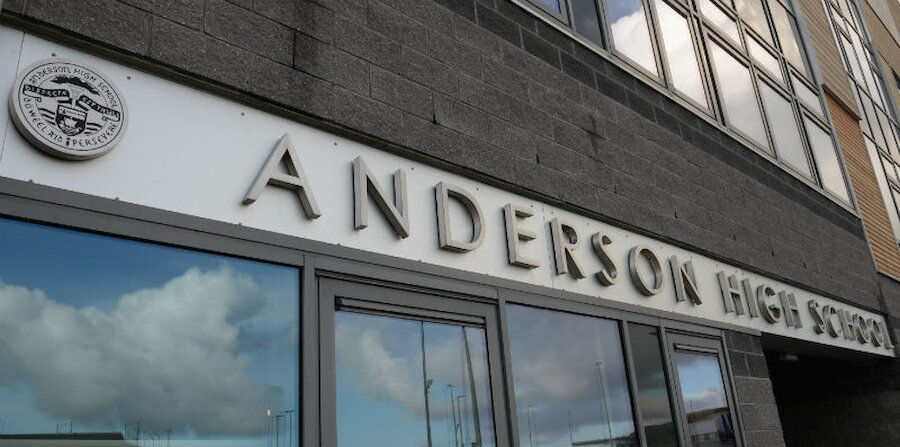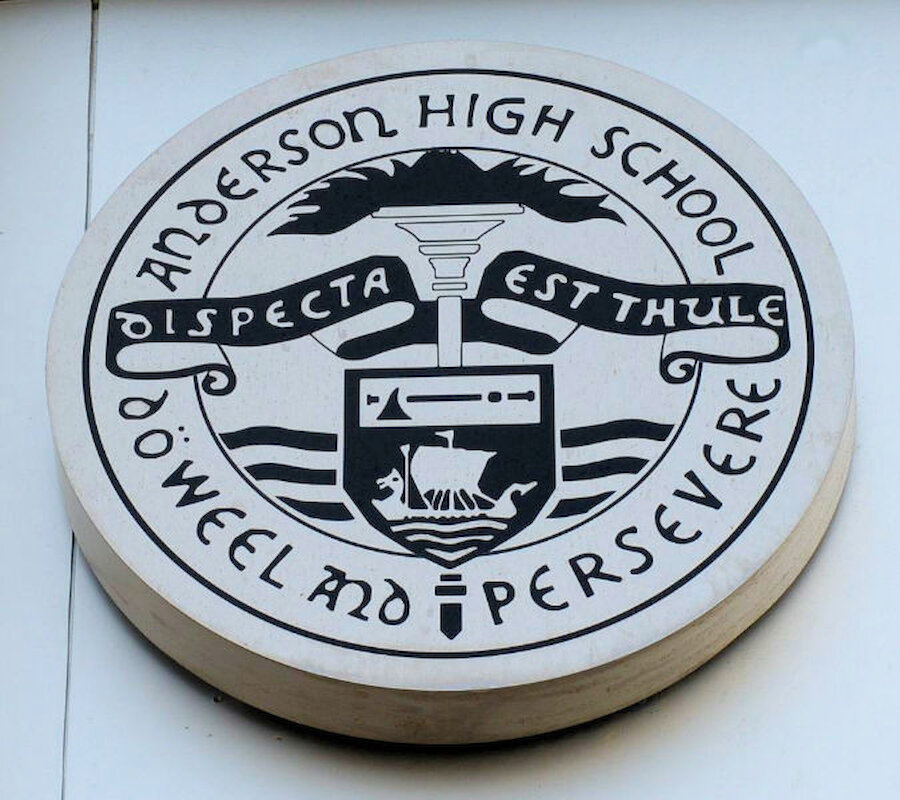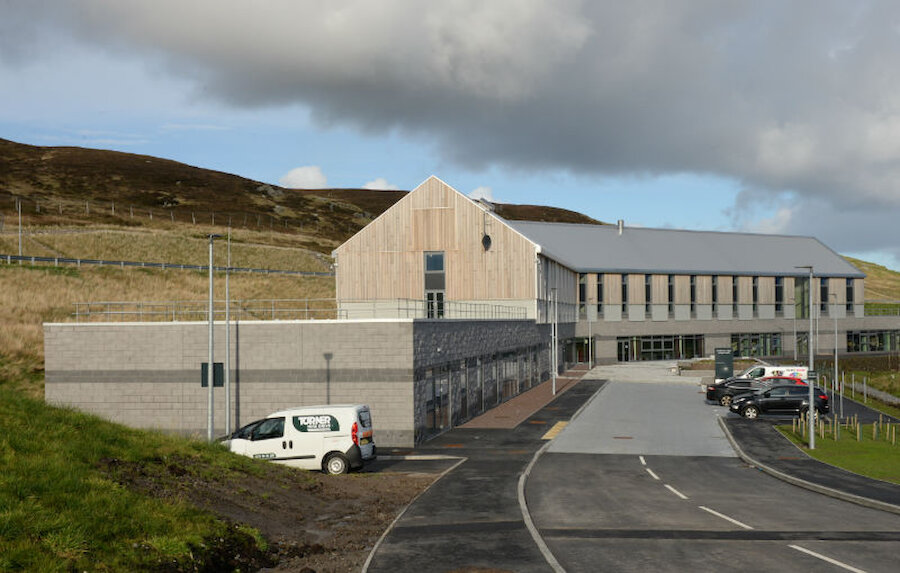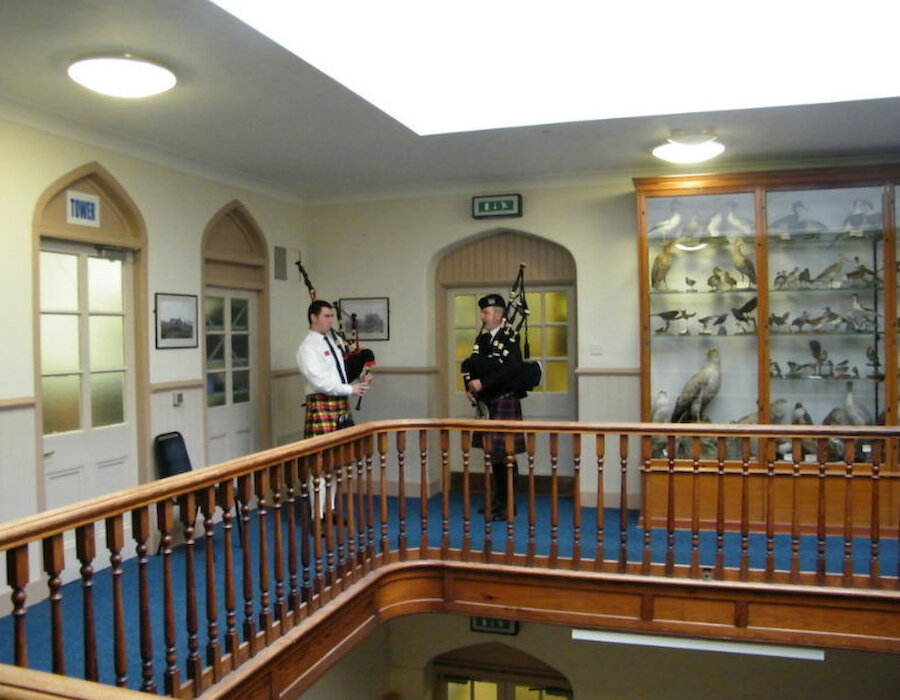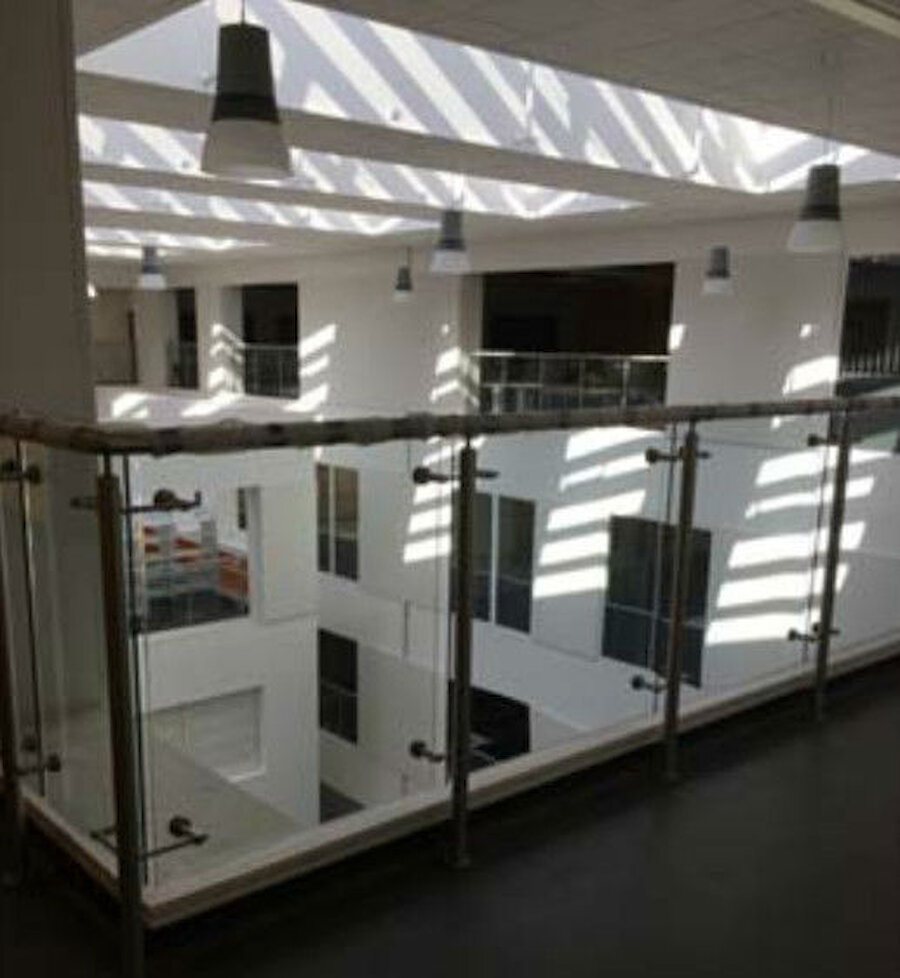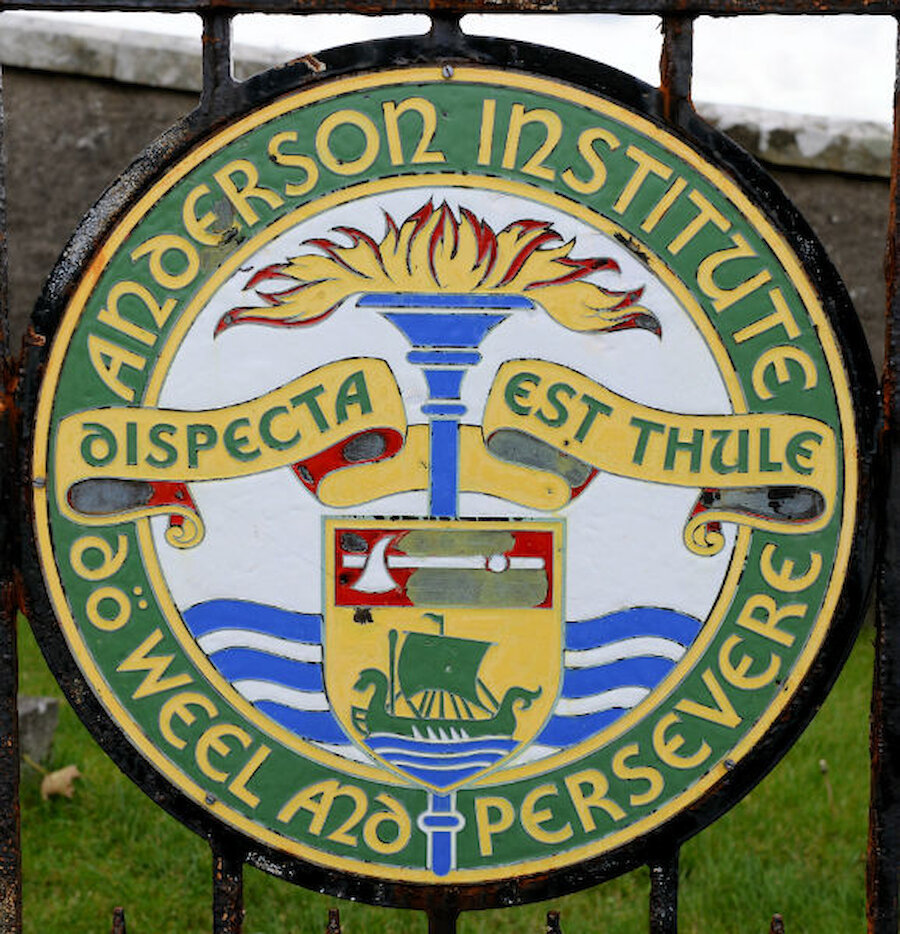The school was requisitioned as a military hospital during the Second World War, its pupils being accommodated, not without difficulty, in the Central School. After the war, the roll continued to grow, reaching 202 in 1948, and temporary classrooms were erected in the grounds. In the centenary year, 1962, further expansion began, as there were now nearly 350 students. Many more classrooms, a large assembly hall and a new gymnasium were added at that time.
In the move to comprehensive education, the Anderson Educational Institute became the Anderson High School and further accommodation continued to be required, including a Games Hall, a science block and, in 2005, a new Additional Support Needs department. Well before the millennium, the school population was in excess of 800; the roll in September 2017 was 884.

